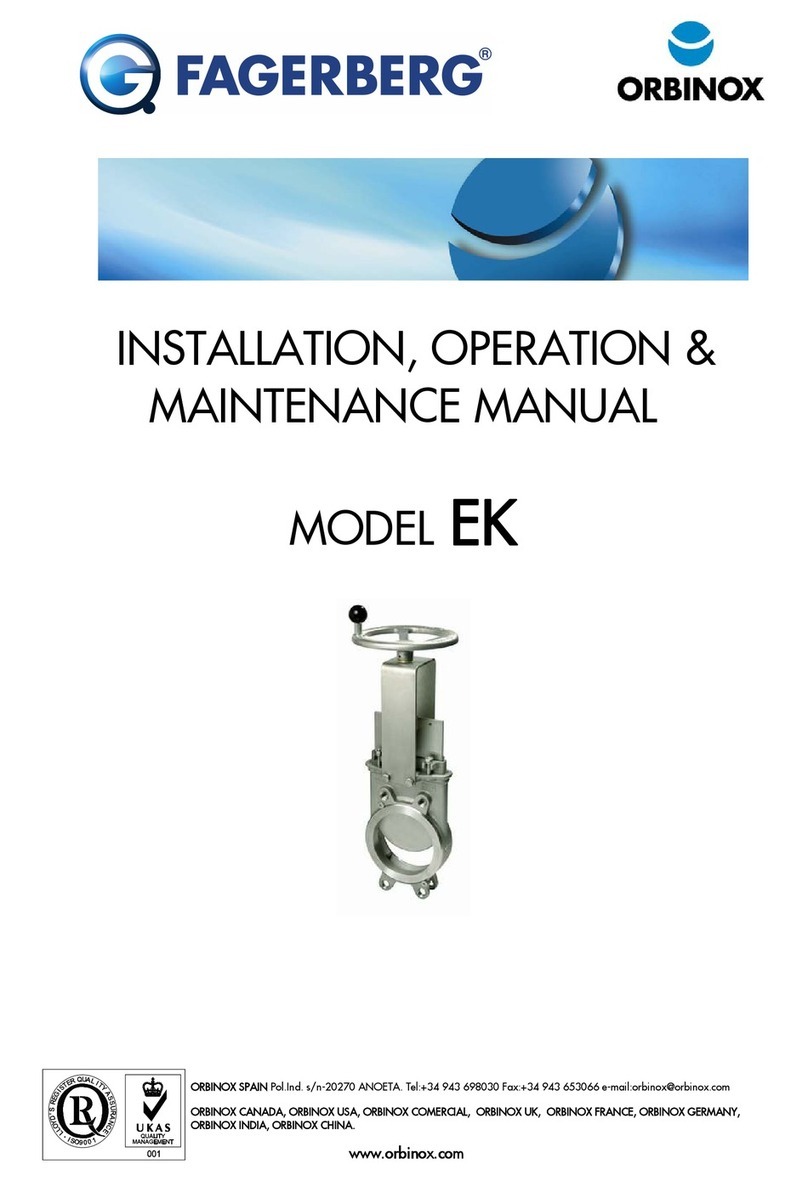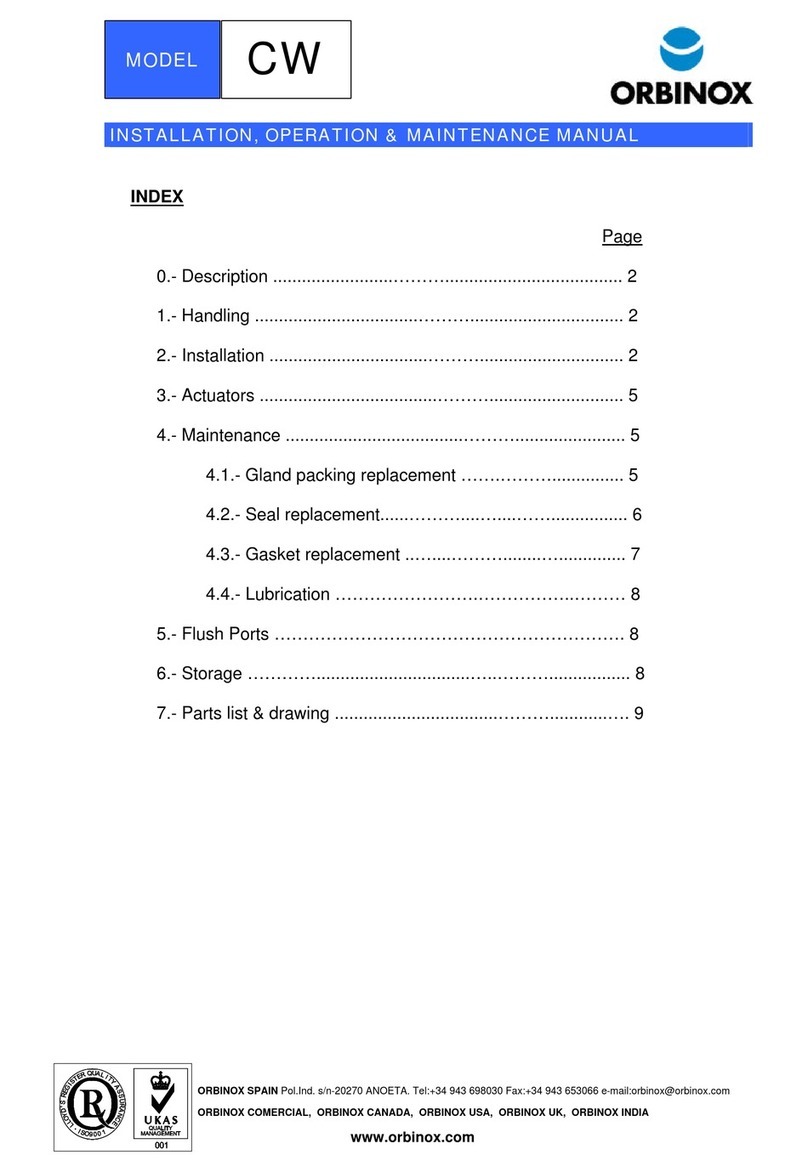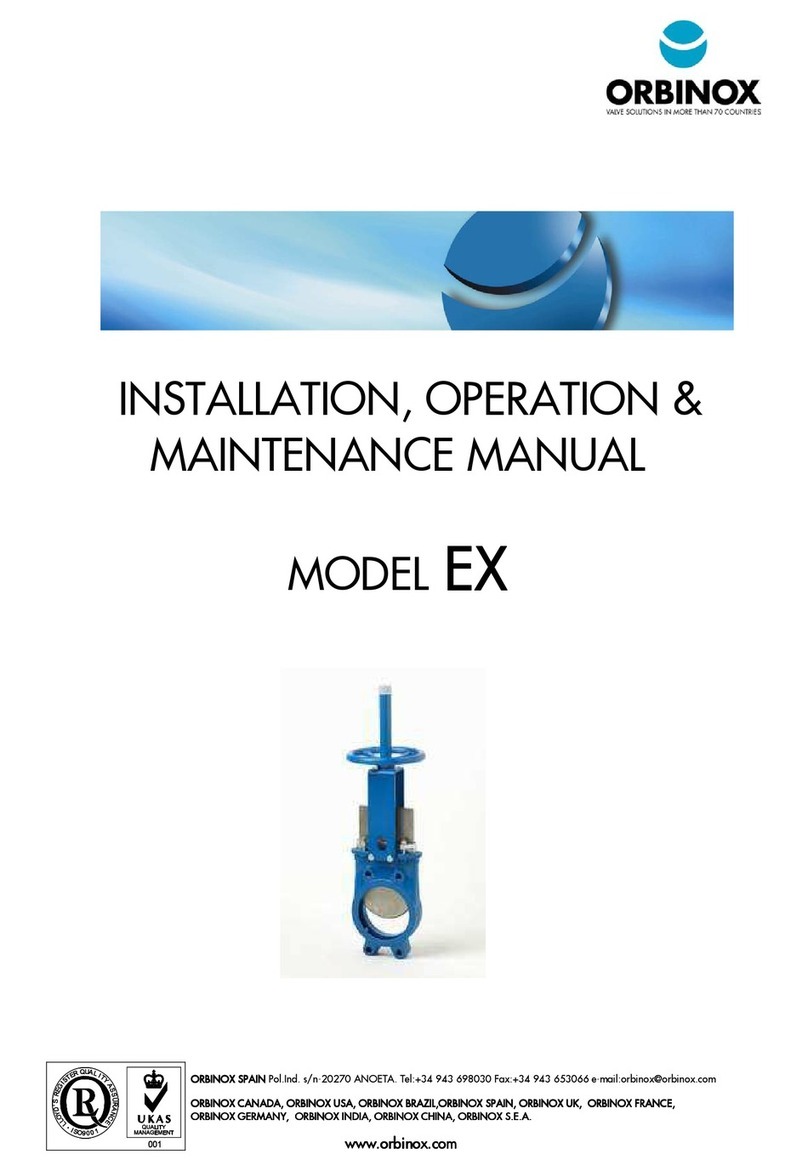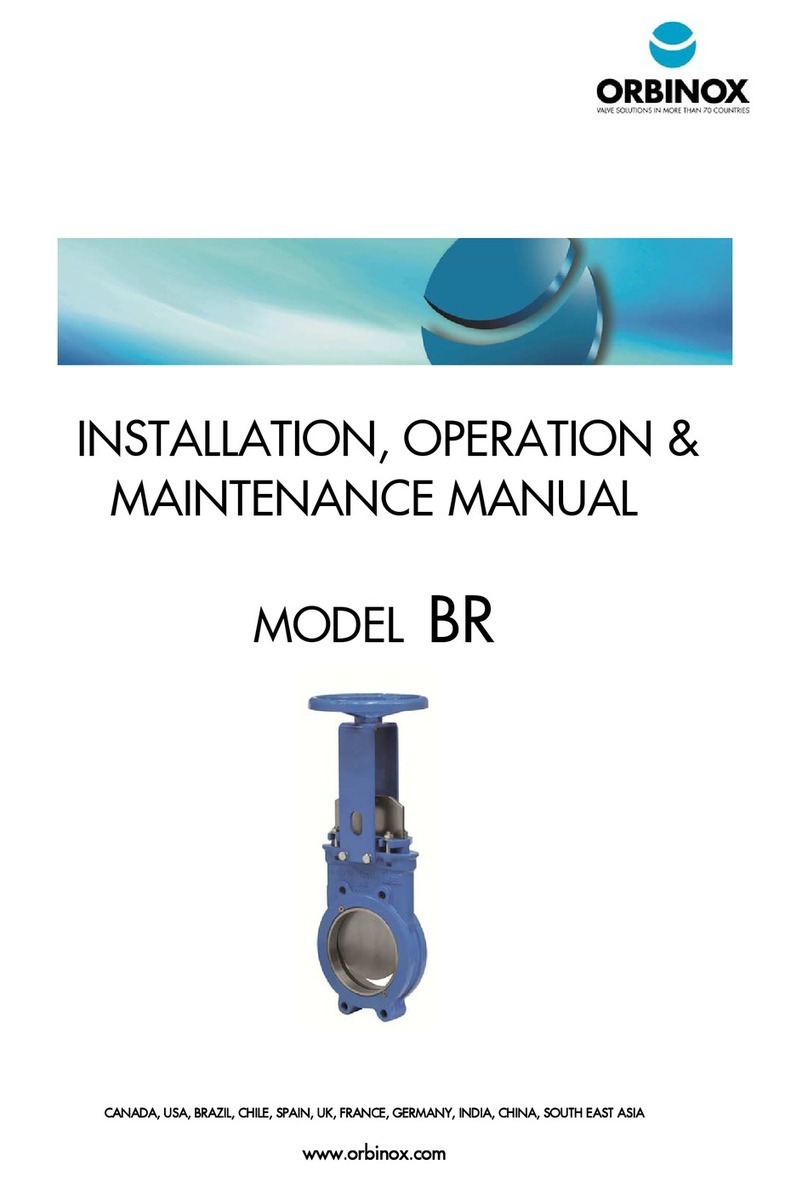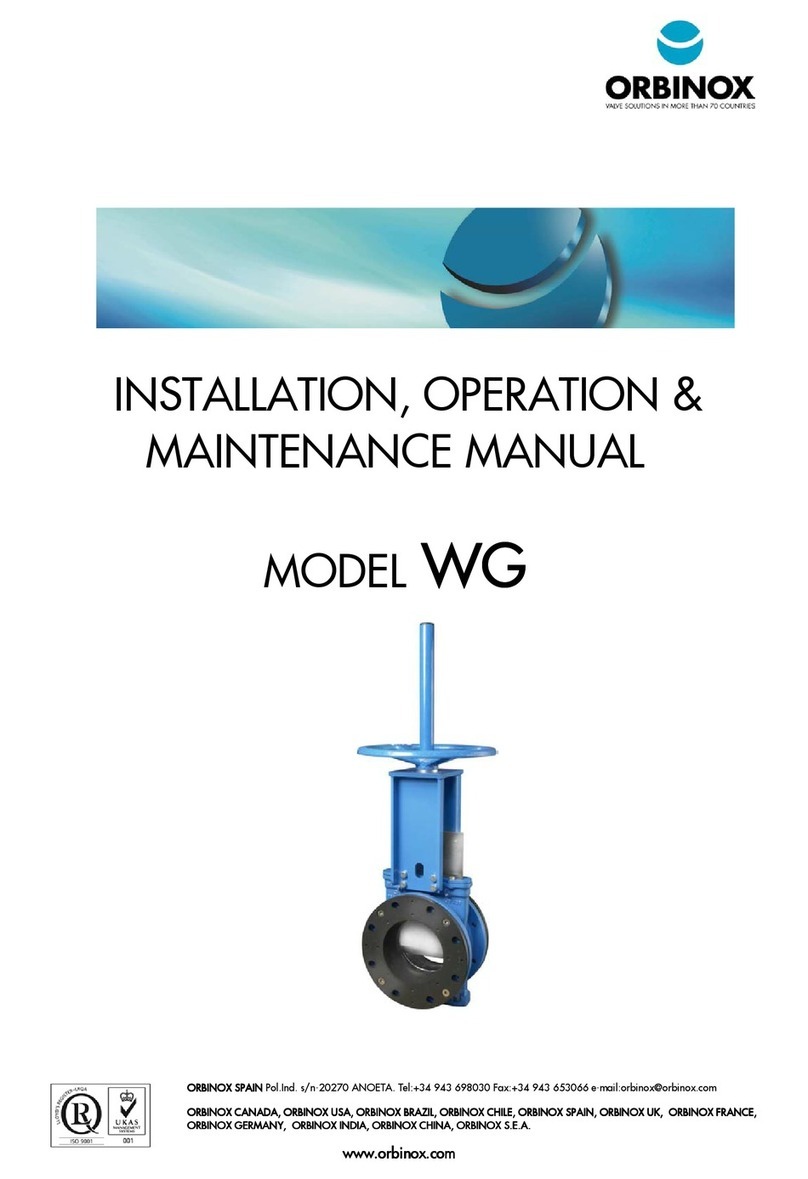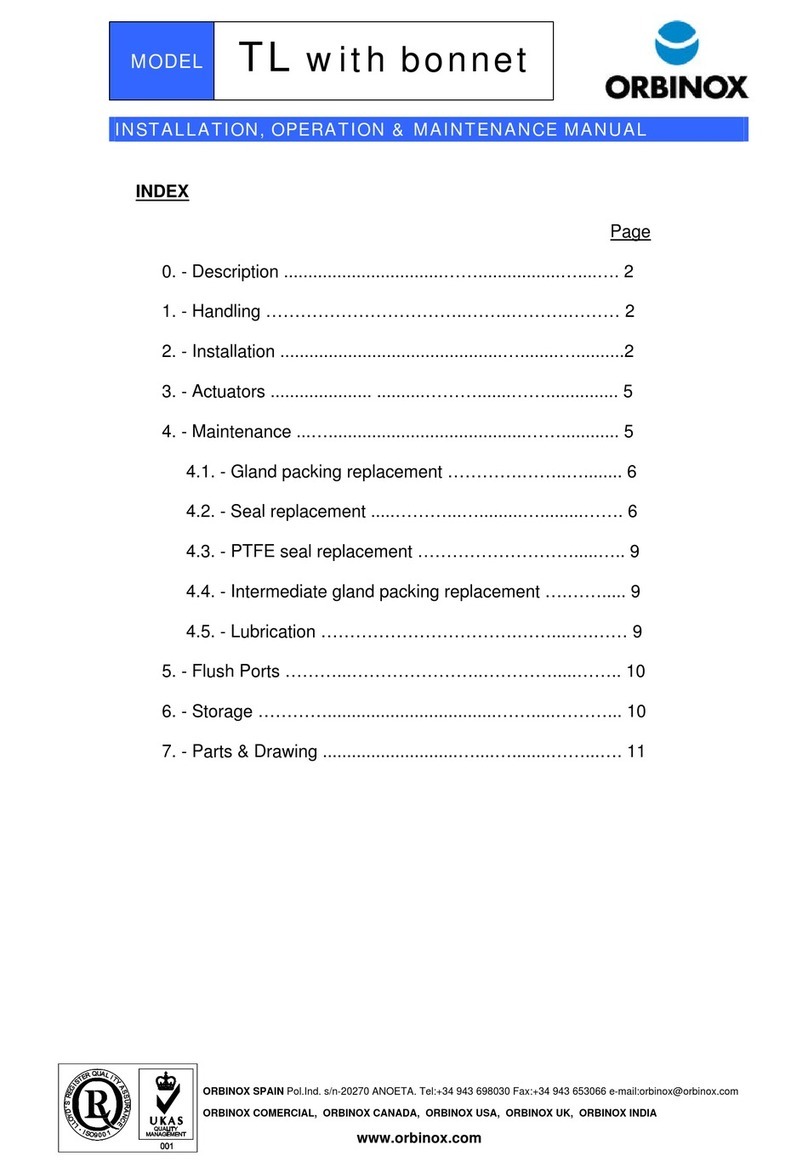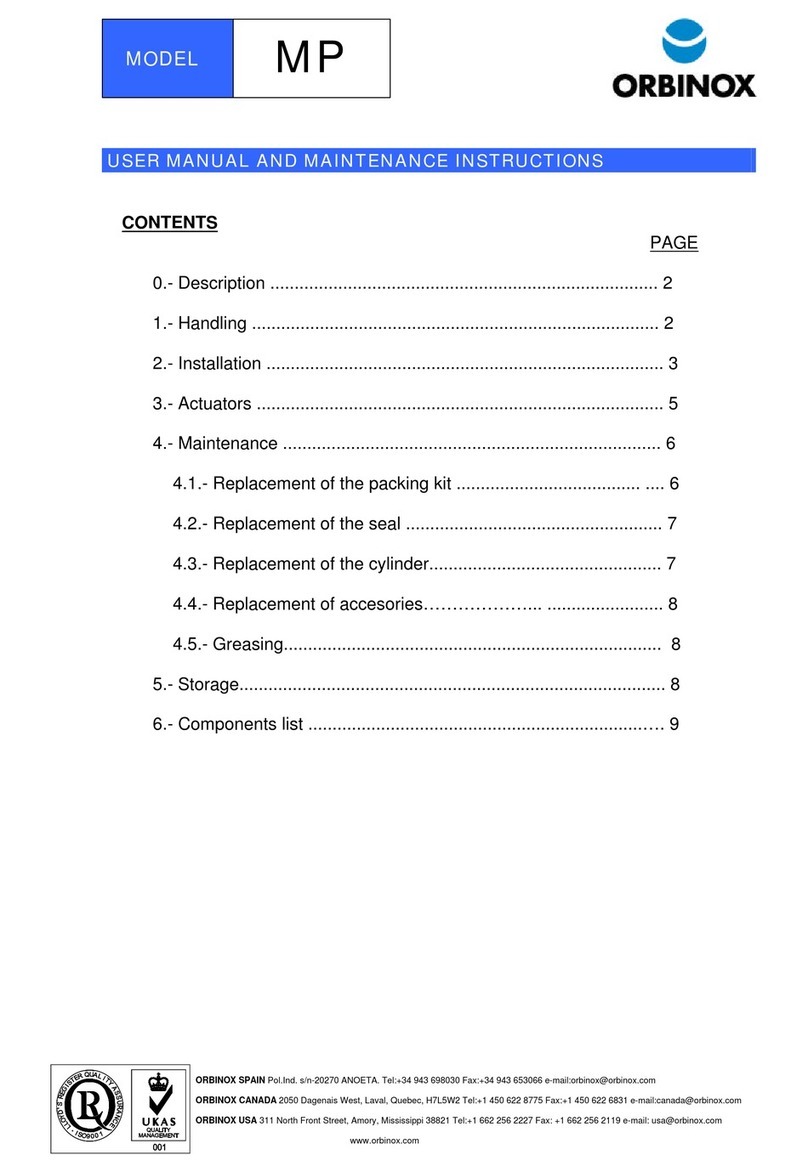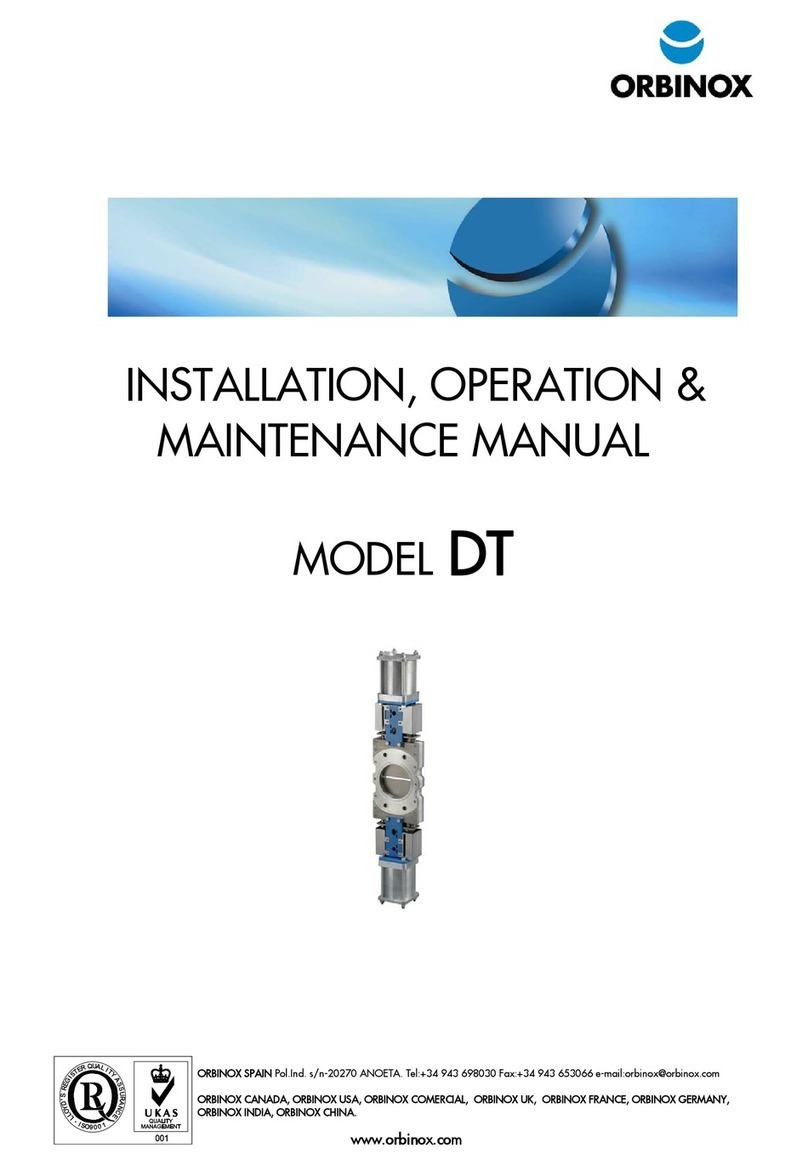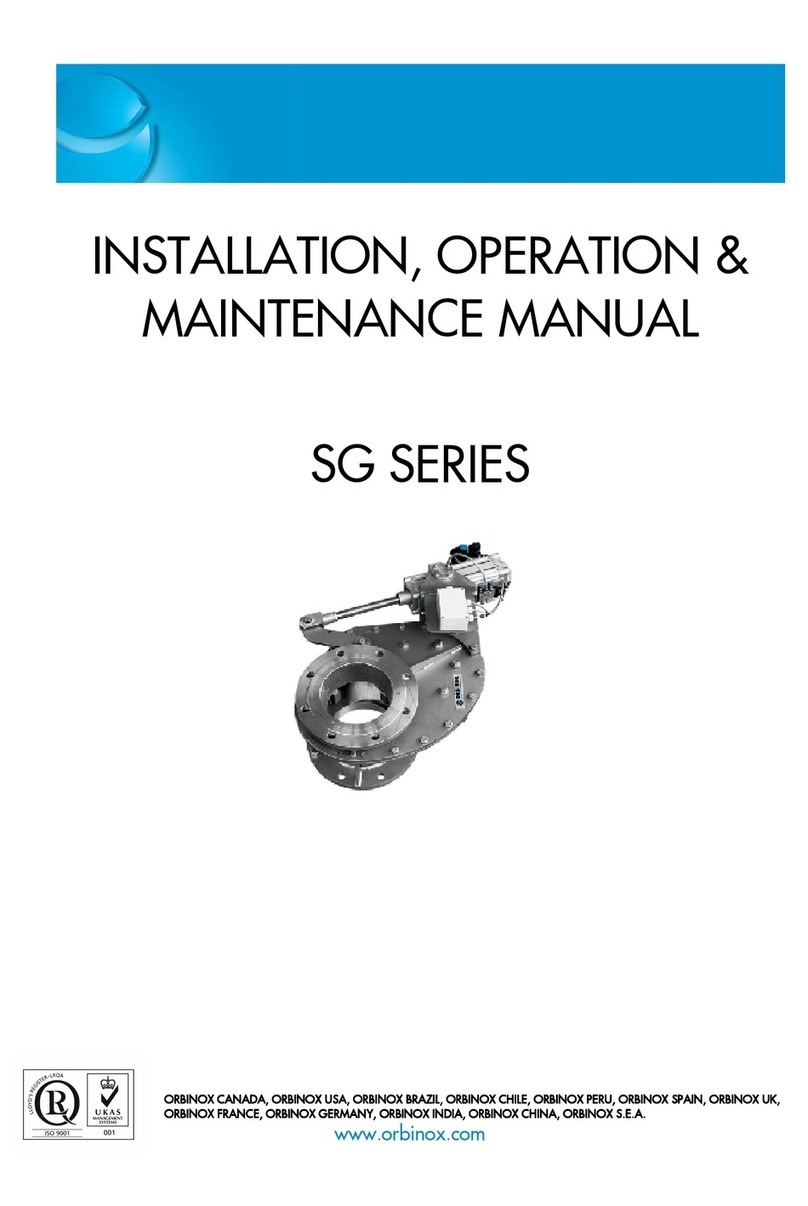
.
EDITION 01-2017
EB-2/11
MODEL
EB
INDEX
INDEXINDEX
INDEX Page
0.- Description .........................…………………………………..……................................. 2
1.- Handling ..................................………..............................……………………………… 2
2.- Installation .................................………..................................................................... 4
3.- Actuators .....................................………................................................................... 6
4.- Maintenance .....................................……….............................................................. 7
4.1.- Gland packing and seal replacement .…....................................................... 7
4.2.- Lubrication …………………….………………………………………………..…… 9
5.- Storage …………................................…..………....................................................... 10
6.- Parts list & drawing ..................................……………………………………..…............ 11
0.- DESCRIPTION
The EB model knife gate is a bi-directional valve and consequently it can be installed without
considering the flow direction.
This valve is designed for general industrial service applications. The design of the body and seat
assures non-clogging shut-off with suspended solids.
The EB valve complies with the following European directives:
- DIR
DIR DIR
DIR 2006
20062006
2006/
//
/42
4242
42/EC (machines)
/EC (machines)/EC (machines)
/EC (machines)
- DIR
DIR DIR
DIR 2014/68/EU
2014/68/EU 2014/68/EU
2014/68/EU (PED)
(PED)(PED)
(PED)
luid: Group 1 (b), 2 (Cat. I, mod.A)
It may also comply with the directive:
DIR
DIR DIR
DIR 2014/
2014/2014/
2014/34
3434
34/EU
/EU /EU
/EU (Explosive Atmospheres)
(Explosive Atmospheres)(Explosive Atmospheres)
(Explosive Atmospheres)
The EB valve may comply with the directive regarding equipment and protective systems for their
use in explosive atmospheres. In these cases, the logotype shall appear on the identification
label of the valve. This label shows the exact classification of the zone where the valve can be
used. The user will be liable for its use in any other zone.
This directive only applies in the following atmospheric conditions:
0,8 bar ≤ P ≤ 1,2 bar
-20ºC < T < 60ºC
Any increase in temperature due to frictional warmth is negligible, since the relative speed of
the moving parts is extremely low.
The risk analysis associated to this directive does not take into account the fluid that goes
through the valve, even when such fluid produces an explosive atmosphere. The user must take
into account the risks that the fluid generates, such as:
-heating of the valve surface.
-generation of electrostatic charges caused by displacement of the fluid.
-shock waves caused by the installation (water hammer), internal crashes generated by the
pellets or the risks due to foreign bodies susceptible of being present in the installation.
1.- HANDLING
(01909) 530444
Fax (01909) 530044
Eurovalve UK Limited
Unit 1D Campbell Way
www.eurovalve.co.uk
The valves are packed according to the appropriate transport standards. If you receive the packing
damaged, please inform the transport company in writing and speak to a company
representative. .
